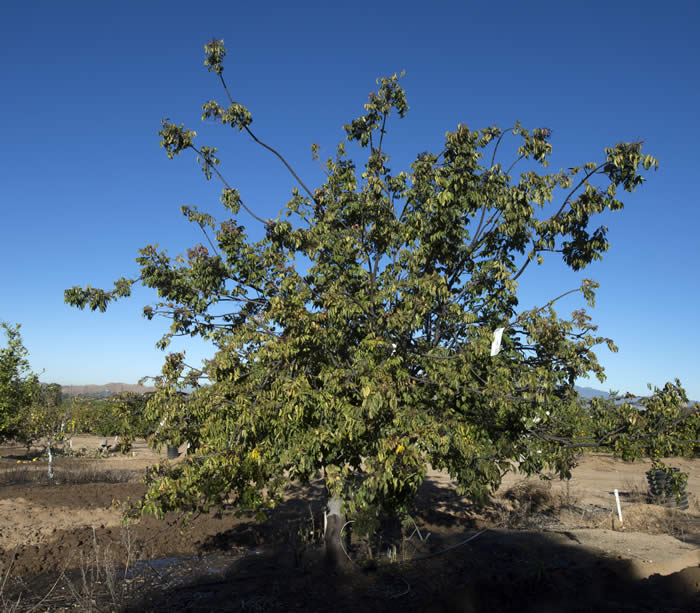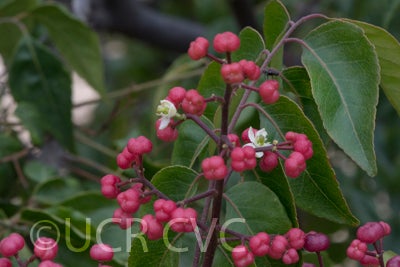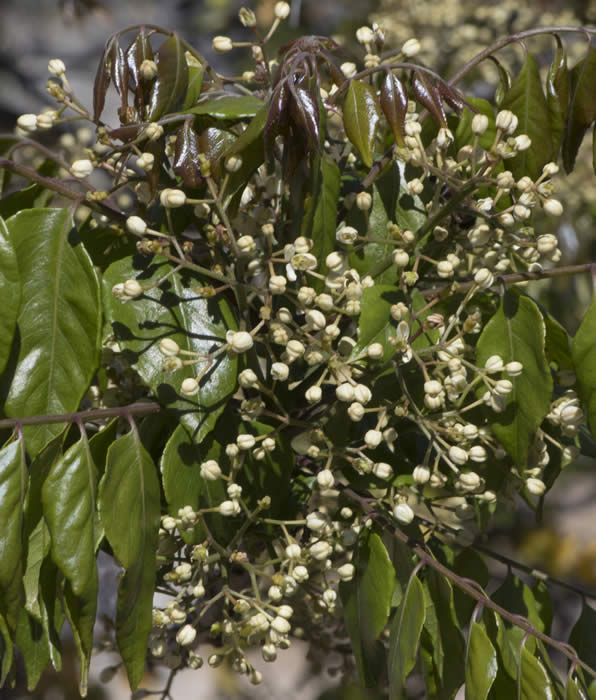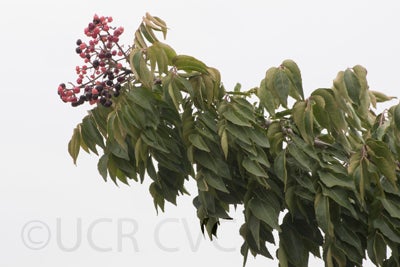Clausena anisata
CRC 3788
PI 358849
Source
Received as seed from Ag. Tech. Serv., Pretoria, South Africa, via Plant Intro Office, 1977.
Parentage/origins
Parents unknown
Rootstocks of accession
own root
Season of ripeness at Riverside
Has not been observed
Season of flowering at Riverside
July to August
Description from The Citrus Industry Vol. 1 (1967)
"This Species was described by Oliver (1861, p. 34) from Nigerian material as follows: "Leaflets 10-20, panicles lax, elongate, shorter than the leaves or longer, lateral branches divaricate in a cymose manner, slender, pubescent; ovary 4-furrowed, 4-loculed; ovules paired [in each locule], obliquely superimposed or almost collateral.…Small shrub 3 ft. [92 cm] high with white flowers. Leaves 6-12 in. [15-30 cm] long; leaflets unequal-sided, obliquely ovate or ovate-oblong, obscurely crenulate, sometimes slightly acuminate or emarginate, pubescent. Inflorescences paniculate, 6-9 in. [15-23 cm] long, borne in the axils of the upper leaves. Pedicels 2/3-1 lin. [1.2-2 mm] long. Bractioles minute, ovate or lanceolate. Calyx 4-merous, lobes ovate. Stamens with filaments abruptly dilated in the middle, subulate above. Ovary short-stipitate, glabrous. Style rather long, rather thick, 4-furrowed, separating at the base."
This species is the only one found in western Africa, but in eastern Africa it shares the central part of the range of the East African C. abyssinica. All three African species vary greatly and have ill-defined varieties.
Engler (1931, p. 322) reported that in western Africa C. anisata is found in the scattered bush forests of the hinterland of Cameroons (now Cameroon), where it is a tree 15 to 20 m high at an altitude of 2,100 m. Engler found that in eastern Africa it reaches the very considerable altitude of 3,000 m (9,840 feet), where it grows in the mountain meadows as a beautiful tree of medium height with a broad crown. This is by far the highest altitude yet reported for any member of the orange subfamily, but since Mount Kilimanjaro is situated only 30° 37' south of the equator, even at high altitudes no severe cold in winter is experienced there.
Clausena anisata and C. inaequalis were separated by Engler (1931, p. 322) by the length of the inflorescences in relation to the length of the leaves: in C. anisata the flower clusters are much longer than half the length of the leaves; in C. inaequalis they are never more than half the length of the leaves. De Wildeman and Durand (1901, p. 743) found the leaves of C. anisata to be 15 to 40 cm long, those of C. inaequalis to be 7.5 to 25 cm long; and the flowers of C. anisata to occur in many-flowered paniculate cymes, but those of C. inaequalis in three-flowered clusters or singly along the racemes. These two species have similar, more or less obovate or pyriform ovaries, with a large gland at the tip of each locule."
Availability
Not commercially available through the Citrus Clonal Protection Program. Please check with your local nursery.
USDA Germplasm Resources Information Network page for Clausena anisata





